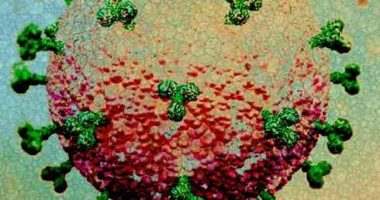In a significant development that raises concerns about the efficacy of antibiotics in livestock management, a new study conducted by researchers, including A. Brenciani and S.N. Coccitto, has reported the emergence of florfenicol resistance among Actinobacillus pleuropneumoniae isolates found in two pig farms in Italy. Actinobacillus pleuropneumoniae, the bacterium responsible for causing the severe respiratory disease porcine pleuropneumonia, has traditionally been controlled with phenicol antibiotics, among other classes. However, this recent research identifies three specific isolates of the pathogen, showing varying levels of resistance to florfenicol, likely driven by the presence of the floR gene.
The study conducted comprehensive florfenicol susceptibility tests on the isolates, revealing an intermediate resistance in one and full resistance in the other two. Genetic analysis through whole genome sequencing indicated that these isolates, which tested positive for floR, also carry genes for toxins typically associated with moderate virulence. Intriguingly, the research unveiled that the resistance gene resided on a novel plasmid, which was compared and found highly similar to one previously identified in another species of bacteria from pigs.
The findings underscore an urgent need for continuous surveillance of antibiotic resistance in pathogens affecting livestock to mitigate spreading and ensure the sustainability of antibiotic effectiveness in agricultural settings. The research serves as a clarion call for the global farming community and health regulators to reassess management practices and containment strategies in the face of evolving bacterial resistance.
The increasing detection of antibiotic-resistant bacteria in the agricultural sector is a growing public health concern, compromising the efficacy of current therapeutic regimens and shadowing the sustainability of the livestock industry. This recent study spearheaded by A. Brenciani and S.N. Coccitto sheds light on the escalating issue within porcine populations, focusing on resistance to florfenicol in Actinobacillus pleuropneumoniae – a key respiratory pathogen in pigs.
Actinobacillus pleuropneumoniae causes porcine pleuropneumonia, a highly contagious and often fatal respiratory disease affecting pigs worldwide. This pathogen not only compromises animal welfare but also inflicts significant economic losses due to mortality, reduced productivity, and increased costs for disease management and control. Antibiotics, particularly those in the phenicol class such as florfenicol, have been the cornerstone of therapeutic strategies against this disease. Florfenicol is favored for its effectiveness and the lower risk of inducing bacterial resistance compared to other antibiotics.
However, the emergence of florfenicol-resistant strains of Actinobacillus pleuropneumoniae signifies a critical juncture in the management of porcine respiratory diseases. The resistance is particularly alarming because it limits the available options for effective treatment, thereby exacerbating the challenges faced by the swine industry. The discovery of resistance genes on plasmids – mobile genetic elements that can transfer between bacteria – suggests that the potential for wider dissemination of these resistance traits across different bacterial populations is plausible and concerning.
The background of this research is rooted in a broader concern regarding the use of antibiotics in livestock. Over the past decades, the agricultural sector has heavily relied on antibiotics not only for disease treatment but also for disease prevention and growth promotion. This extensive use has accelerated the rate at which bacteria develop resistance mechanisms. The recent findings on florfenicol resistance underscore the consequences of antibiotic overuse and highlight the crucial need for stricter regulations and innovative management strategies in livestock treatment protocols.
Global efforts have been intensifying to tackle the issue of antibiotic resistance, with organizations such as the World Health Organization (WHO) and the Food and Agriculture Organization (FAO) advocating for prudent use of antibiotics in agriculture. They emphasize the implementation of good husbandry practices, biosecurity measures, and vaccination as alternatives to reduce the reliance on antibiotics.
The significance of the study by Brenciani and Coccitto extends beyond the immediate implications for swine health management to resonate with global efforts aimed at preserving antibiotic effectiveness. It calls upon veterinary scientists, farmers, policymakers, and international health bodies to act synergistically in curbing the spread of resistant bacteria and safeguarding public health. Continuous surveillance programs and research into alternative treatments are crucial in this endeavor. By understanding the mechanisms and spread of resistance, stakeholders can formulate more effective containment and prevention strategies, ensuring the sustenance of both animal and human health across the globe.
To thoroughly investigate the emergence of florfenicol resistance in Actinobacillus pleuropneumoniae, researchers A. Brenciani and S.N. Coccitto employed a multifaceted methodological approach that encompassed both microbiological assays and genetic analyses. The study’s primary objectives were to assess the susceptibility of bacterial isolates to florfenicol and to determine the genetic basis underlying observed resistance patterns.
**1. Sampling and Isolation:**
The research began with the collection of bacterial samples from pigs diagnosed with porcine pleuropneumonia in two different farms in Italy. Using standard bacteriological techniques, Actinobacillus pleuropneumoniae isolates were cultured from the lung tissues of affected animals. The isolates were then stored and propagated in appropriate growth media to ensure viability and purity for subsequent testing.
**2. Antibiotic Susceptibility Testing:**
For the antibiotic susceptibility testing, the research team employed broth microdilution methods, which are widely used in clinical microbiology to determine the Minimum Inhibitory Concentration (MIC) of antibiotics that inhibits the growth of a microorganism. A range of florfenicol concentrations was prepared to evaluate the extent of bacterial resistance. Each isolate was exposed to these concentrations, and their growth was monitored. By following the Clinical and Laboratory Standards Institute (CLSI) guidelines for veterinary pathogens, the team categorized the isolates into susceptible, intermediate, or resistant based on their growth responses to florfenicol.
**3. Genetic Analysis:**
Upon identifying the isolates with intermediate and full resistance to florfenicol, the researchers proceeded with whole genome sequencing to unravel the genetic makeup of these pathogens. They specifically looked for known resistance genes using advanced bioinformatics tools. The presence of the floR gene, implicated in phenicol resistance, was confirmed in the resistant isolates.
**4. Plasmid Analysis:**
To explore the possibility of horizontal gene transfer as a mechanism of resistance spread, plasmid isolation was performed on the floR-positive isolates. Sequencing of these plasmids followed, aimed at identifying and analyzing sequences that could facilitate the mobilization of resistance genes. Comparative genomics was utilized to investigate similarities between the novel plasmids in Actinobacillus pleuropneumoniae and plasmids found in other bacterial species from different environments, thereby assessing the potential cross-species transmission.
**5. Statistical Analysis:**
Statistical methods were applied to analyze data from the antibiotic susceptibility tests to establish correlations between resistance levels and the presence of specific resistance genes. This step was critical in confirming the role of the floR gene in florfenicol resistance observed in the isolates.
This rigorous methodology provided a comprehensive understanding of florfenicol resistance in Actinobacillus pleuropneumoniae, offering insights into both the antimicrobial susceptibility patterns and the genetic context of resistance. The adept combination of phenotypic assays and genomic techniques highlighted in this study exemplifies a well-rounded approach to tackling antibiotic resistance in veterinary pathogens.
**Key Findings and Results:**
The study spearheaded by A. Brenciani and S.N. Coccitto revealed critical findings on florfenicol resistance in Actinobacillus pleuropneumoniae which have significant implications for the management of bacterial infections in swine. The principal discoveries and their implications are summarized as follows:
**1. Identification of Resistance Levels:**
The antibiotic susceptibility tests demonstrated that out of the three isolates tested, one exhibited intermediate resistance while the remaining two showed full resistance to florfenicol. These findings indicate a concerning trend where a significant proportion of isolates from clinical cases possess resistance to a key antibiotic used in treating porcine pleuropneumonia.
**2. Genetic Basis of Resistance:**
Gene sequencing revealed the presence of the floR gene in all resistant isolates. This gene is known to confer resistance to phenicol antibiotics and its identification in these isolates confirms its role in mediating resistance to florfenicol. Additionally, it was found that these genes were located on a new plasmid, which suggests a potential mechanism for the dispersion of resistance genes through horizontal gene transfer.
**3. Comparative Plasmid Analysis:**
Further analysis showed that the plasmids carrying the floR gene in Actinobacillus pleuropneumoniae bore a high similarity to plasmids found in other bacterial species isolated from pigs. This discovery points to the potential exchange of resistance traits among diverse bacterial populations within the same agricultural environment, highlighting a clear risk of widespread resistance proliferation.
**4. Association with Virulence Factors:**
The resistant isolates were also found to carry genes associated with moderate virulence. This suggests that not only are these bacteria resistant to florfenicol, but they also possess the capability to cause disease, which exacerbates the challenge in managing infections caused by these resistant strains.
**5. Implications for Disease Management:**
The study’s findings raise significant concerns about the ongoing effectiveness of florfenicol and possibly other phenicol antibiotics in treating porcine respiratory diseases. With resistance confirmed in key therapeutic agents, there is an urgent need to re-evaluate current treatment guidelines and promote the development of new antimicrobial strategies or alternative treatments.
**6. Calls for Enhanced Surveillance and Regulation:**
The emergence of florfenicol-resistant strains underscores the necessity for robust surveillance systems to monitor antibiotic resistance trends in livestock. These systems are crucial for early detection of resistance patterns and prompt adaptation of treatment protocols to mitigate the impact on animal health and the broader implications for public health.
**7. Global Health Implications:**
The study highlights the broader issue of antibiotic resistance, which is a global health priority. The findings reinforce the call from international bodies like WHO and FAO to implement stricter regulations on antibiotic use in agriculture and to pursue comprehensive strategies that include biosecurity measures, vaccination, and responsible antibiotic stewardship to curb resistance spread.
In conclusion, the research by Brenciani and Coccitto provides vital insights into the resistance mechanisms of Actinobacillus pleuropneumoniae against florfenicol, illustrating broader concerns about antibiotic resistance in veterinary medicine. Their findings advocate for immediate and coordinated responses to manage resistance at the farm level and to ensure sustainable use of antibiotics in agriculture, pivotal for securing global public health and food security.
**Future Directions and Final Thoughts**
The alarming findings of the study by A. Brenciani and S.N. Coccitto mark only the beginning of a critical reevaluation of current practices in livestock management and antibiotic use. Considering the implications of widespread antibiotic resistance, several strategic approaches need be emphasized moving forward:
**1. Development of Alternative Therapies:**
In light of growing resistance to conventional antibiotics like florfenicol, research must prioritize the development of novel therapeutics. This could include phage therapy, where bacteriophages are used to selectively target and destroy bacteria; bacteriocins, which are antibacterial peptides produced by bacteria; and the exploration of non-antibiotic pharmaceuticals that disrupt bacterial virulence factors without promoting resistance.
**2. Enhanced Surveillance Programs:**
There is a clear necessity for implementing enhanced surveillance systems that can monitor and track resistance patterns across various regions and sectors. This data is invaluable, not only for understanding and mapping resistance trends but also for designing tailored intervention strategies that are evidence-based and regionally adapted.
**3. International Collaboration:**
Antibiotic resistance does not respect geopolitical boundaries, making international cooperation essential. Sharing data, research findings, and strategies across borders can help in developing unified global standards and recommendations for antibiotic use in agriculture. This could be facilitated by global organizations such as WHO, FAO, and the World Organisation for Animal Health (OIE).
**4. Policy and Regulatory Adjustments:**
Governments and regulatory bodies need to develop and enforce stricter regulations on antibiotic use in agriculture. These policies should not only limit the non-therapeutic use of antibiotics but also ensure that their application in disease management is in line with veterinary guidance and based on susceptibility testing.
**5. Education and Awareness:**
Farmers, veterinarians, and animal caretakers must be educated about the risks of antibiotic overuse and resistance. Programs designed to increase awareness and understanding of responsible antibiotic use can significantly influence on-the-ground practices and decisions.
**6. Promotion of Biosecurity and Vaccination Programs:**
Strengthening farm biosecurity measures to prevent the entry and spread of infections can reduce the need for antibiotics as a first line of defense. Similarly, enhancing the use of vaccines can play a crucial role in managing diseases and minimizing the reliance on antibiotics.
The study by Brenciani and Coccitto serves as a poignant reminder of the consequences of neglecting the prudent use of antibiotics in agriculture. As resistance continues to evolve, so must our strategies for managing and treating infections. It highlights an urgent need for the scientific community, industry stakeholders, and policymakers to join forces in combating antibiotic resistance. Only through a concerted and multifaceted approach can we hope to maintain the efficacy of antibiotics, thereby ensuring animal health, food security, and safeguarding human health.
The future therefore rests not only on new discoveries and technologies but equally on our collective resolve to implement sustainable practices that push back against the tidal wave of antibiotic resistance that threatens to overwhelm the delicate balance of our ecosystem. As we move forward, let this study be a call to action—for innovation, collaboration, and dedication to ensuring that both our current needs and future security are met with equal vigor.









